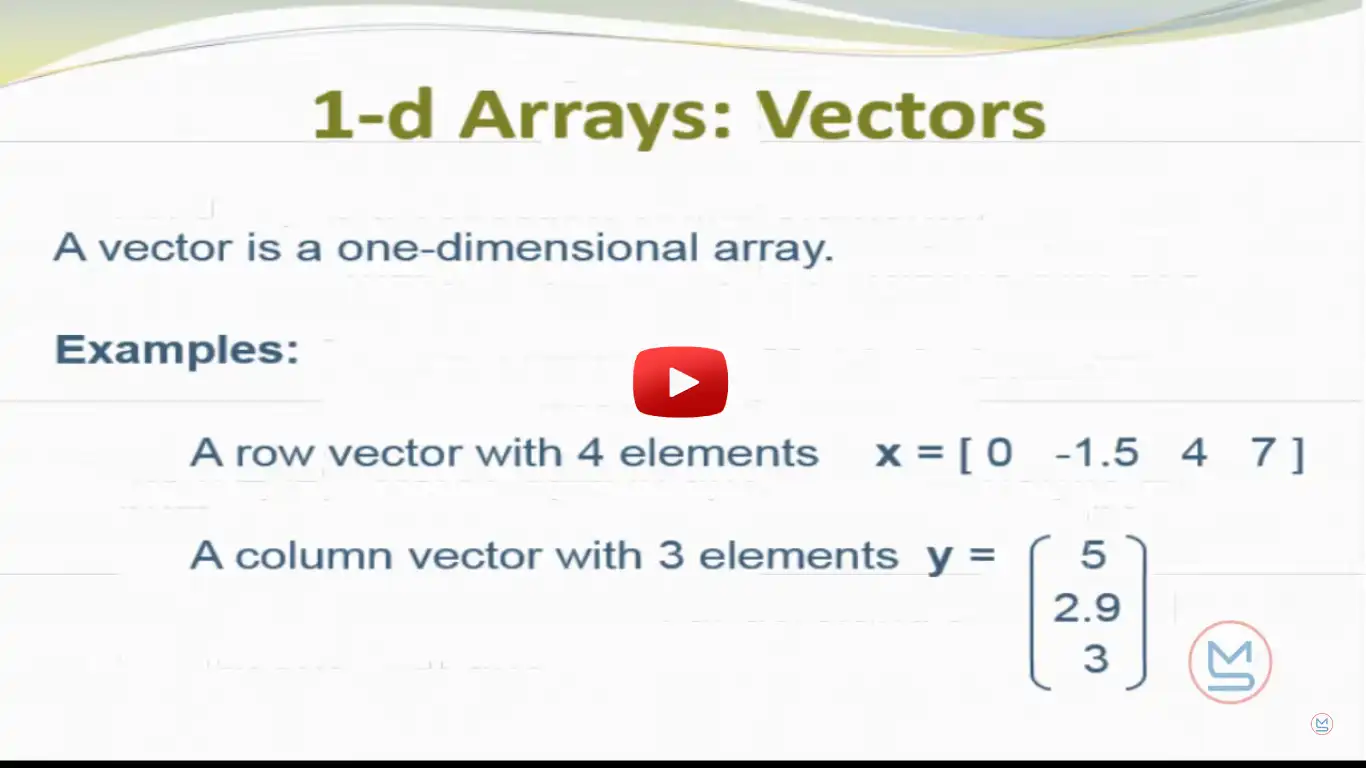
Part 1 of MATLAB Programming Series
Learn the fundamentals of arrays in MATLAB - from creating basic arrays to understanding special array functions for both square and rectangular matrices..
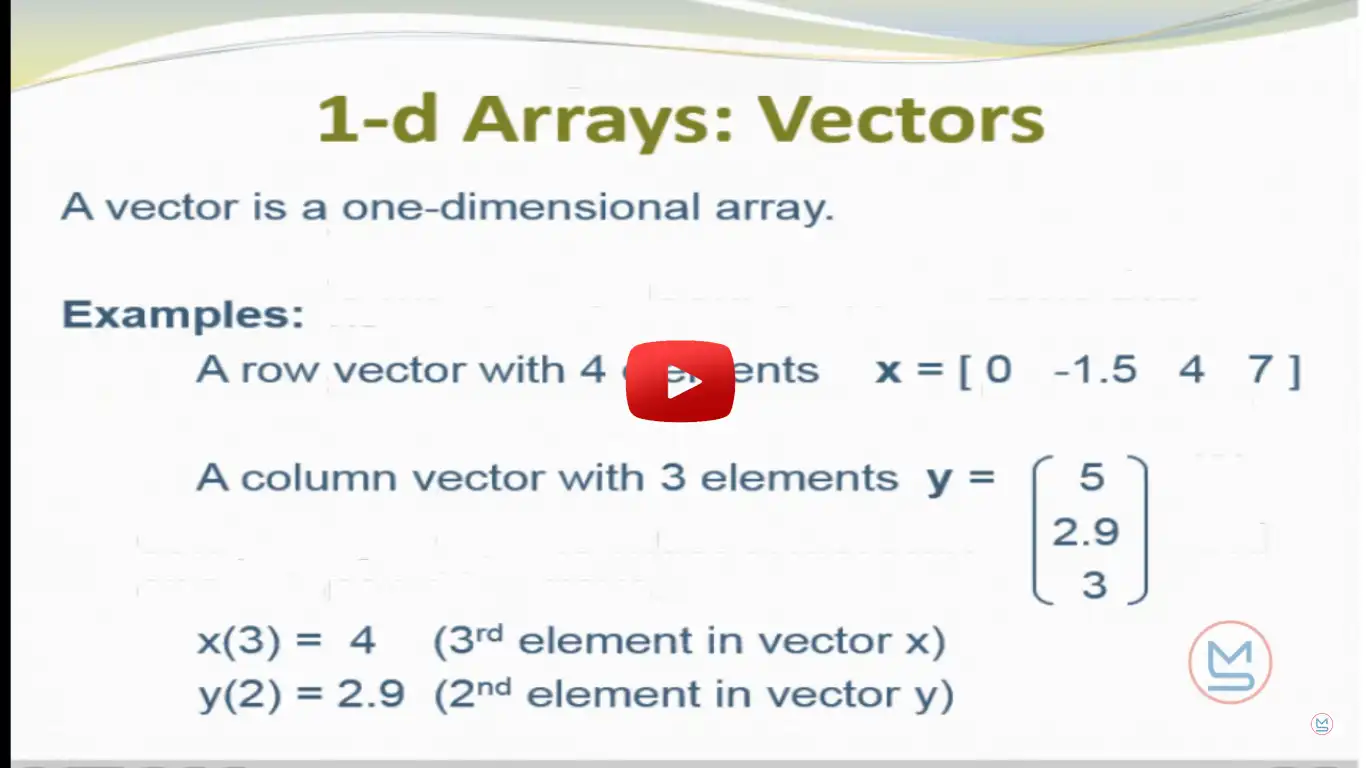
Advanced Array Operations in MATLAB
Explore advanced techniques for manipulating arrays in MATLAB, including indexing, slicing, and reshaping.
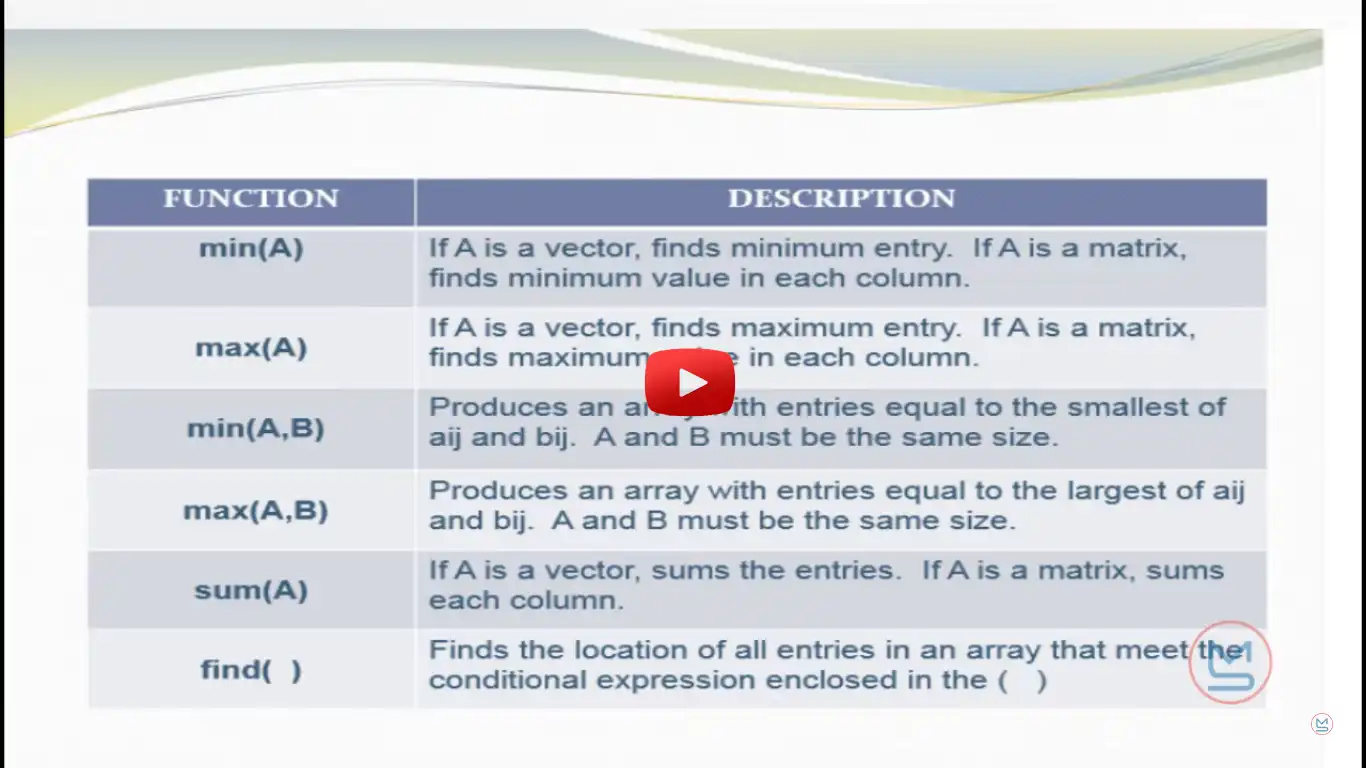
Mastering Multidimensional Arrays
Dive deep into multidimensional arrays in MATLAB. Learn to work with complex data structures, perform advanced operations, and handle real-world scientific computing challenges.
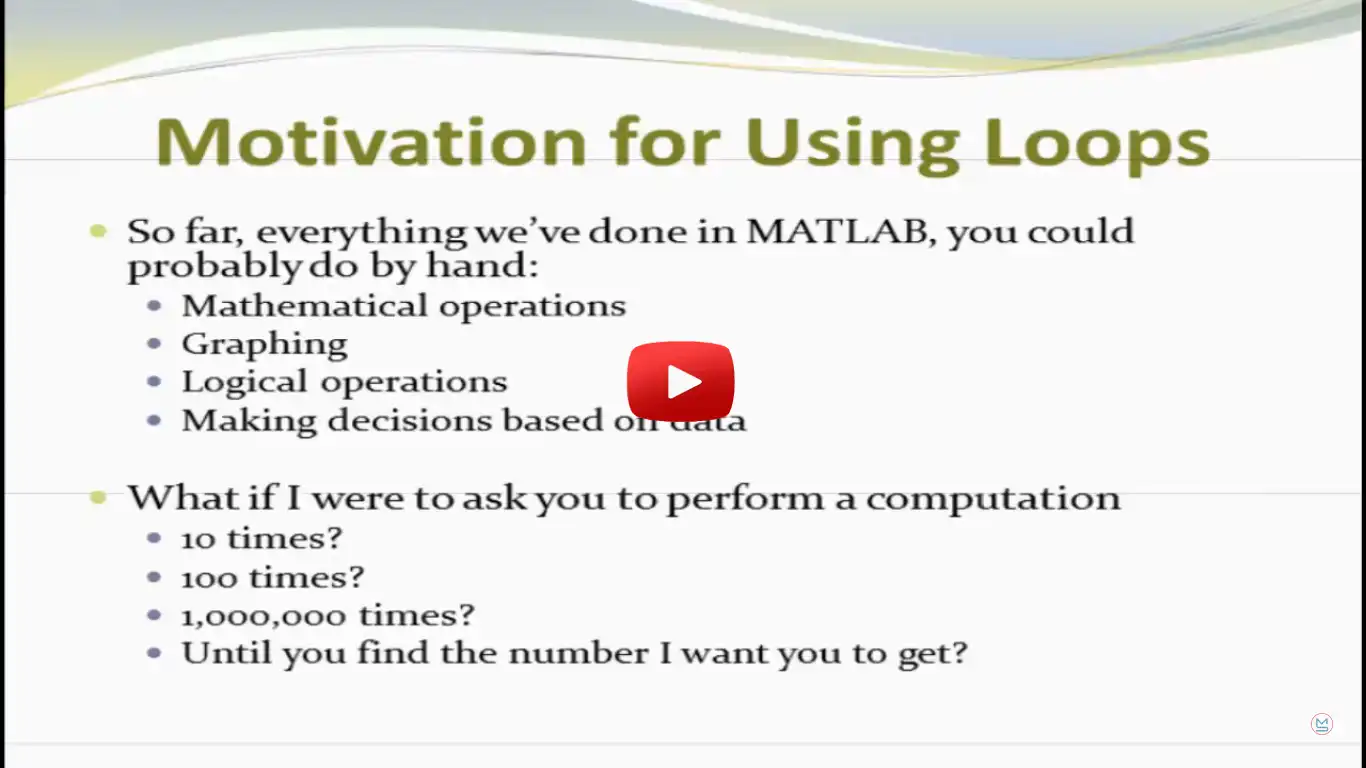
Understanding Loops in MATLAB
Master the fundamentals of loop structures in MATLAB. Learn how to automate repetitive tasks, iterate through arrays, and write efficient code using for loops.

While Loops in MATLAB
Master the fundamentals of loop structures in MATLAB. Learn how to automate repetitive tasks, iterate through arrays, and write efficient code using while loops.
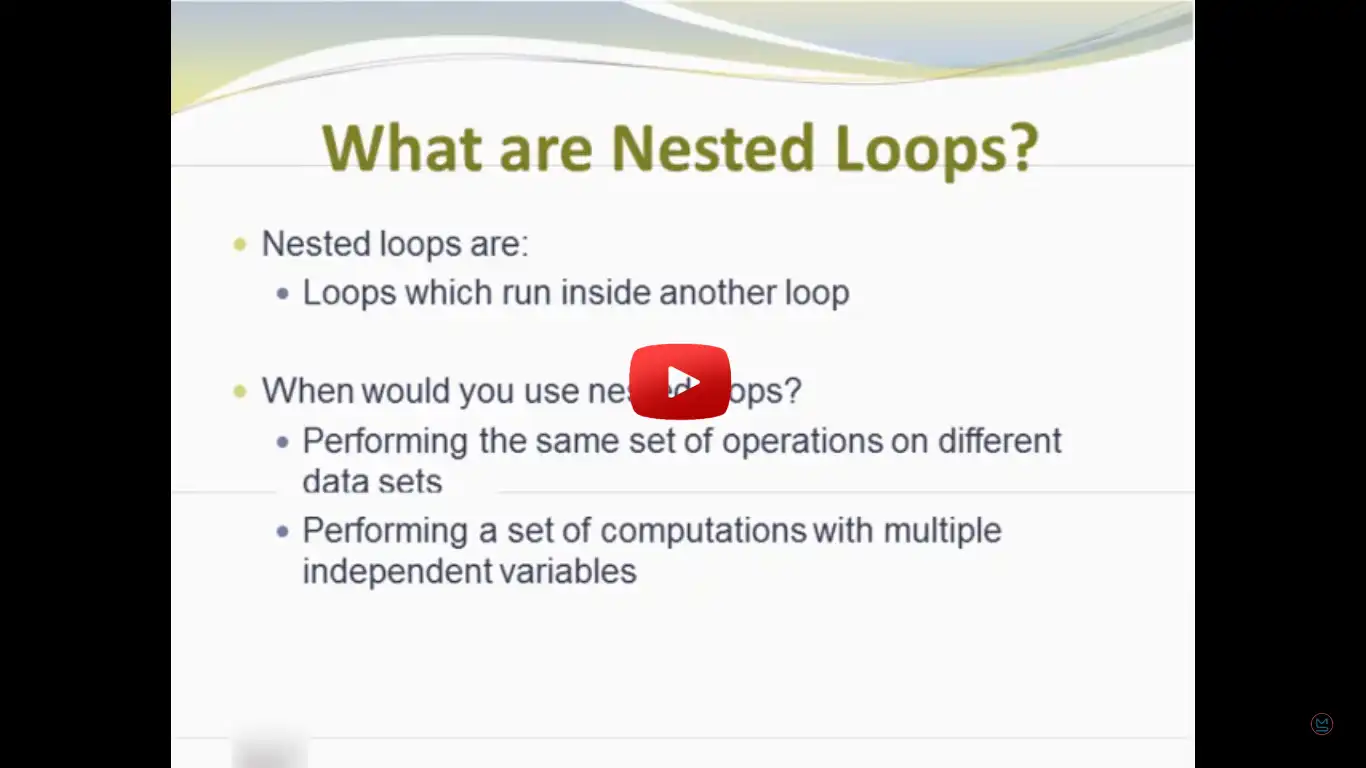
Mastering Nested Loops in MATLAB
Take your loop mastery to the next level with nested loops. Learn to handle complex iterations and solve advanced programming challenges.
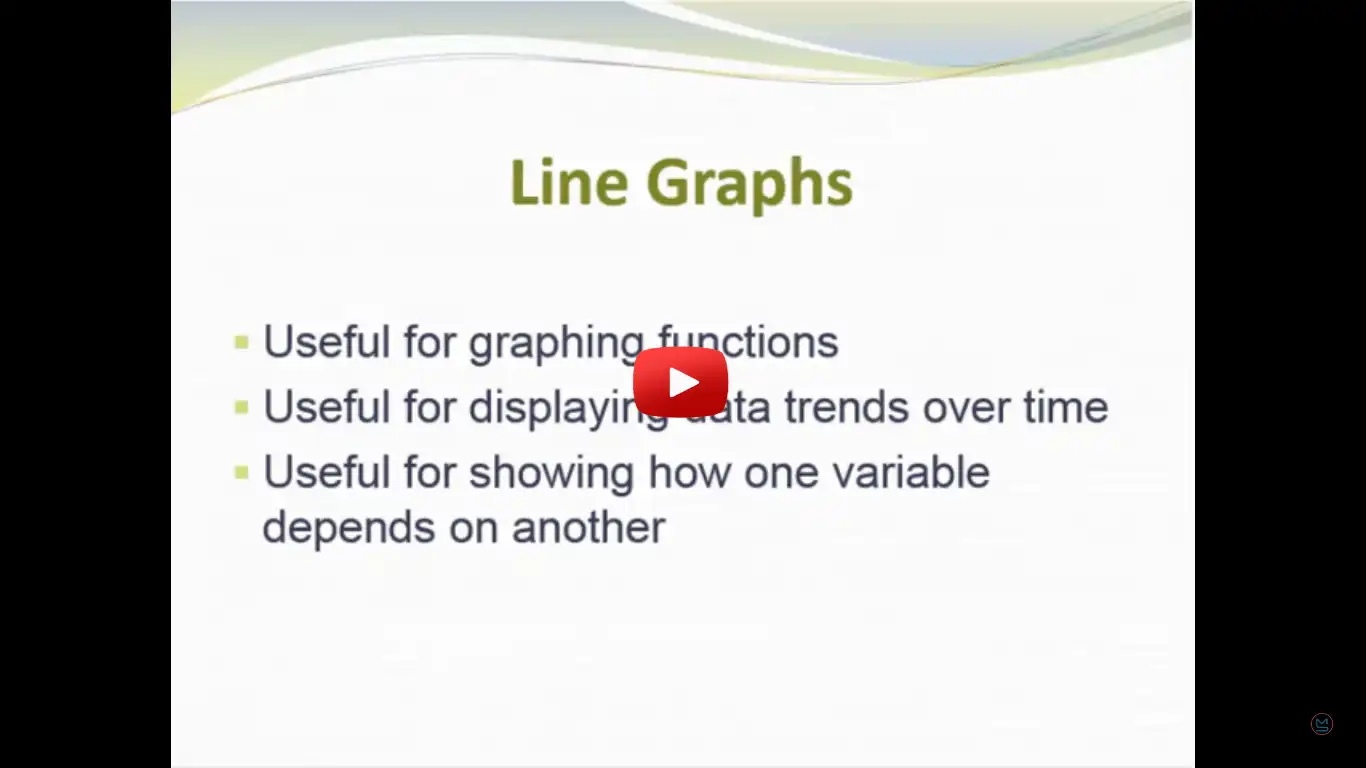
Data Visualization with MATLAB
Learn to create powerful visualizations in MATLAB. Master various plotting techniques, customize graphs, and effectively communicate your data through visual representation.

If Statements in MATLAB Programming
Discover how to use if statements in MATLAB to control program flow, make decisions, and implement conditional logic in your scripts and functions.

Input Statements in MATLAB Programming
Discover how to use input statements in MATLAB to gather user input, validate data, and create interactive programs.